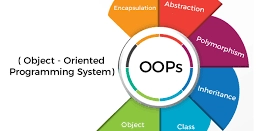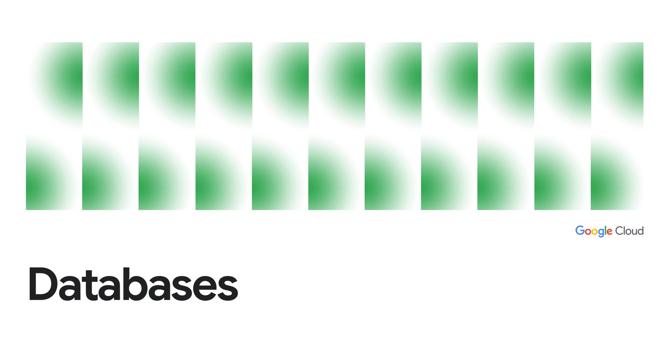Java
Javacodegeeks
2M
205

Image Credit: Javacodegeeks
The Erosion of Trust: How Oracle’s Monetization Strategy Threatens Java’s Future
- Oracle's licensing model change for Java, introducing a subscription model, has raised concerns about the future of Java as a free and open platform.
- Oracle's legal battles, such as the lawsuit against Google over the use of Java APIs in Android, have created a hostile environment and discouraged innovation.
- The Java community has responded by developing open alternatives like Amazon Corretto and Eclipse Temurin, and migrating Java EE to the Eclipse Foundation as Jakarta EE.
- Java's future is uncertain due to corporate distrust, talent drain, and incompatibility with cloud-native environments, but its existing codebase ensures it won't disappear overnight.
Read Full Article
12 Likes
Medium
2M
0

My Favourite Java Tricks for Clean, Concise LeetCode Solutions
- Instead of writing loops to initialise or manipulate lists, leverage the Collections utility class.
- Instead of verbose if-else blocks, use ternary operator for concise code.
- Handling maps with nested values can be simplified without checking if a key exists first.
- Use StringBuilder for string manipulation in loops, faster and cleaner.
Read Full Article
Like
Dev
2M
188

Image Credit: Dev
Beginner’s Guide to Recursion in Java
- Recursion is when a method calls itself to solve a problem by breaking it down into smaller, self-similar pieces.
- To write a recursive method in Java, you need a way for the method to call itself and a base case for when to stop.
- The two golden rules of recursion are to always have a base case and to always move toward the base case.
- Use recursion for naturally recursive problems and manageable input sizes, and avoid it when the input size may create too many recursive calls or when an iterative solution is simpler or more readable.
Read Full Article
11 Likes
Discover more
Dev
2M
362

Image Credit: Dev
Getting Started as a Java Developer: A Complete Guide
- Java is one of the most enduring and widely used programming languages with platform independence and a robust ecosystem.
- To start a career as a Java developer, first, understand the basics of Java syntax, data types, and control structures.
- Explore object-oriented programming in Java to create reusable and modular code.
- Dive into advanced Java concepts like threads and familiarize yourself with tools and frameworks used in Java development.
Read Full Article
21 Likes
RandomThoughts
2M
137

Compatiblity between Kotlin and Java regarding Default Methods
- Default methods in interfaces in Kotlin are not compatible with Java.
- When using default methods in interfaces, the default implementation is not visible when called from Java.
- The deprecated @JvmDefault annotation has been replaced by @JvmDefaultWithoutCompatibility1 and @JvmDefaultWithCompatibility2.
- Kotlin automatically creates an Abstract class in the Interface called Interface$DefaultImpls to implement default methods.
Read Full Article
8 Likes
Medium
2M
335
Image Credit: Medium
From Boilerplate to Brilliance: Unlocking Supercharged Microservices with Spring Boot 3.x & Java 21
- Spring Boot 3.x, with the release of Java 21, brings groundbreaking improvements in performance, concurrency, and observability.
- Java 21 features align perfectly with Spring Boot's microservice model, offering blazing speed and non-blocking IO with Spring WebFlux + R2DBC.
- Native Java is now the new standard for serverless and edge computing, no longer experimental.
- Spring Boot 3.x offers a mature and intuitive development experience with a growing community and rich ecosystem.
Read Full Article
20 Likes
Medium
2M
78

Image Credit: Medium
What Java Bytecode Instructions Actually Look Like and Do
- Java bytecode is what the Java Virtual Machine reads from .class files rather than running the Java file directly.
- The .class file contains a structured layout, starting with a magic number, version, and a constant pool storing method names, string values, and structural info.
- Following the constant pool, the class file describes the class itself with details like extensions, interfaces, fields, and methods.
- Methods in bytecode consist of instructions such as iload, imul, bipush, iadd, istore, etc., to handle data manipulation and calculations.
- Exception handling is also represented in bytecode through an exception table that specifies how to manage exceptions.
- Bytecode includes attributes for source file tracking, line numbers, and a LocalVariableTable for debugging and profiling purposes.
- Bytecode instructions operate in a stack-based manner, moving values between the stack and local variables for data manipulation.
- Arithmetic and logical instructions are used for operations on the stack, with one instruction per operation.
- Object-oriented instructions in bytecode handle object references, field access, method calls, and instance variable manipulations.
- Jump instructions in bytecode control flow, including conditionals, loops, switch statements, and method returns to exit execution.
Read Full Article
4 Likes
Javacodegeeks
2M
303

Image Credit: Javacodegeeks
Java vs. Rust vs. Go in Systems Programming: A Comparative Analysis
- Java, Rust, and Go are compared in the context of systems programming, exploring their advantages in various areas.
- Memory Safety & Performance: Rust's ownership system ensures data races prevention, Java's Panama Project introduces FFI with manual memory management, and Go uses garbage collection with value types and escape analysis.
- Concurrency Models: Rust features fearless concurrency with thread-safe design and ownership, Java's Project Loom offers high-throughput concurrency with virtual threads, and Go has lightweight goroutines with channels.
- Use Case Recommendations: Rust excels in high-performance system components, Go shines in cloud-native services, and Java + Panama is recommended for enterprise systems with existing Java code. Rust's compile-time guarantees make it suitable for safety-critical systems.
Read Full Article
18 Likes
Infoq
2M
353

Image Credit: Infoq
LittleHorse, a Java Workflow Engine for Distributed Systems Orchestration
- LittleHorse is a Java open-source platform designed to orchestrate distributed systems, addressing the challenges related to state management and coordination.
- LittleHorse allows developers to define workflows programmatically using languages such as Java, Go, Python, C#, .NET, eliminating the need for specialized DSLs.
- The platform's architecture revolves around the LittleHorse Kernel, written in Java, which executes defined processes and manages state durably.
- LittleHorse offers intelligent workflow orchestration, allowing developers to focus on core business logic rather than infrastructure.
Read Full Article
21 Likes
Javacodegeeks
2M
303

Image Credit: Javacodegeeks
How to Reuse PreparedStatement in Java
- PreparedStatement in Java helps in executing parameterized SQL queries, enhancing security and performance by preventing SQL injection and reducing query parsing overhead.
- Reusing a PreparedStatement without closing it between executions is beneficial as the database can avoid recompilation, leading to improved performance, security, reduced load, and cleaner code.
- Creating a new PreparedStatement within a loop, as shown with the BOOKS table insertion example, is inefficient as it forces SQL parsing and compilation in each iteration.
- The correct approach involves preparing the PreparedStatement once and reusing it across multiple executions, optimizing performance and maintaining cleaner code.
- Batch processing with PreparedStatement is optimal for handling large data volumes, reducing network traffic, leveraging database batch capabilities, and enhancing overall efficiency.
- By reusing PreparedStatement objects in Java JDBC API, developers can significantly improve performance, code quality, and overall database operation efficiency.
- Choosing the right reuse strategy based on the use case, such as batch processing for bulk inserts, can lead to enhanced throughput and streamlined operations.
- Efficient use of PreparedStatement in Java SQL contributes to optimized database operations and cleaner code writing.
- Developers can download the source code examples provided in the article to implement efficient PreparedStatement reuse in Java applications.
Read Full Article
18 Likes
Dev
2M
43

Image Credit: Dev
Object-Oriented Programming in Java — The Heart of Modern Development
- Object-Oriented Programming (OOP) is a programming paradigm that organizes software design around objects rather than just functions and logic. Java, one of the most widely used programming languages, is built entirely on OOP principles, making it a powerful tool for creating scalable, modular, and maintainable applications.
- OOP in Java is based on classes and objects. A class is a blueprint or prototype defining the structure, attributes, and methods, while an object is an instance of a class with actual memory allocation.
- OOP has four pillars: encapsulation, inheritance, polymorphism, and abstraction. Encapsulation bundles data and methods into a single unit, promoting data protection. Inheritance allows classes to inherit properties and behaviors from other classes. Polymorphism enables different classes to respond to the same method call in different ways. Abstraction hides implementation details and exposes only essential features.
- Java is considered a pure object-oriented language, whereas Python and C++ support both object-oriented and procedural programming. OOP in Java is the backbone of robust, scalable, and maintainable software design.
Read Full Article
2 Likes
Cloudblog
2M
202

Image Credit: Cloudblog
Google Cloud Database and LangChain integrations now support Go, Java, and JavaScript
- Last year, Google Cloud and LangChain announced integrations to give generative AI developers access to LangChain Python packages for leveraging Google Cloud's database portfolio.
- The integrations have now expanded language support to include Go, Java, and JavaScript.
- Developers can use vector stores, chat message history, and document loaders within the LangChain integrations.
- This technology enables applications like personalized product recommendations, question answering, and customer service automation.
- Java and Go are commonly used for production-grade applications, while JavaScript and TypeScript are preferred for asynchronous programming and front-end compatibility.
- Google Cloud integrates secure connections, SSL certificate handling, and IAM authentication for PostgreSQL databases.
- LangChain.js for JavaScript developers provides tools for connecting large language models to data sources and reasoning capabilities.
- LangChain4j is available for Java developers, offering access to VertexAI Gemini models for LLM-powered applications.
- LangChainGo supports Go developers with AlloyDB and Cloud SQL for PostgreSQL integration for data-aware and agentic applications.
- Integrations include vector stores, memory, and document loaders, with code snippets provided for each language.
Read Full Article
12 Likes
Minis
1y
1.3k

Image Credit: Minis
Skills that Can Turbocharge Your Developer Salary and Make You a Java Juggernaut
- In-depth knowledge of Spring and Hibernate, along with expertise in multithreading, collections, and exception handling, enhances your proficiency, promoting collaboration with cross-functional teams for a competitive edge.
- Familiarity with front-end technologies (HTML, CSS, JavaScript) enables full-stack application development, fostering versatility.
- Competency in SQL and database design, coupled with effective troubleshooting skills, ensures robust, scalable applications and improved code quality.
- Proficiency in Git streamlines collaboration and code management, while expertise in CI/CD pipelines (e.g., Jenkins) facilitates seamless development workflows.
Read Full Article
13 Likes
For uninterrupted reading, download the app